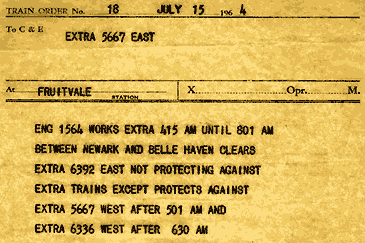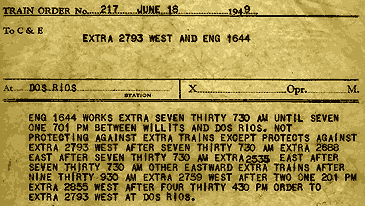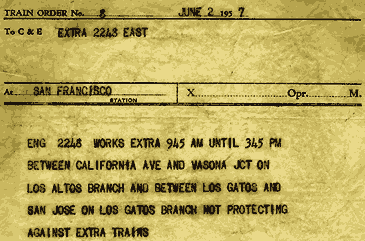Form H: The Maid of All Work
bonus: understanding 'flag protection'
bonus: understanding 'flag protection'
The whole idea behind From H train orders is to establish limits within which a train crew can perform its work with no, or little, worry about other trains. The phrase "not protecting against extra trains" can make the difference between an 'early quit' (going home early), and 'dying on the law' (running out of Hours of Service time).
'Protection' in the sense used here largely refers to traditional Rule 99 flagging by crew memebers. In non-signalled ('dark') territory, this can be a problem for a work extra, because conditions might require flagmen (a.k.a. brakemen) to take warning positions 1-2 miles beyond either end of the train. This doesn't leave much of a crew left to do the switching. If block signals are present to provide protection, then the flagman to the rear is not required (that's the function of block signals), but if you are protecting against a train ahead, you still need a flagman up there. Flagmen carry fusees (same as highway flares), torpedoes (sort of square cherry bombs that pop when a train runs over them) and red flags to warn trains. In all, Rule 99 protection is very involved (four pages-worth in SP's 1983 rule book), and is sometimes very time consuming. Wx4 has thoughtfully provided a separate page further elucidating Rule 99.
Work extras are normally required to protect against regular trains, and clear the main track without delaying passenger trains. The expectation is that work extras will, at most, minimally delay regular and extra freight trains. A regular work extra crew, if they are smart, will comply with these provisions rather than face the wrath of the dispatcher, who can make life very miserable for them.



